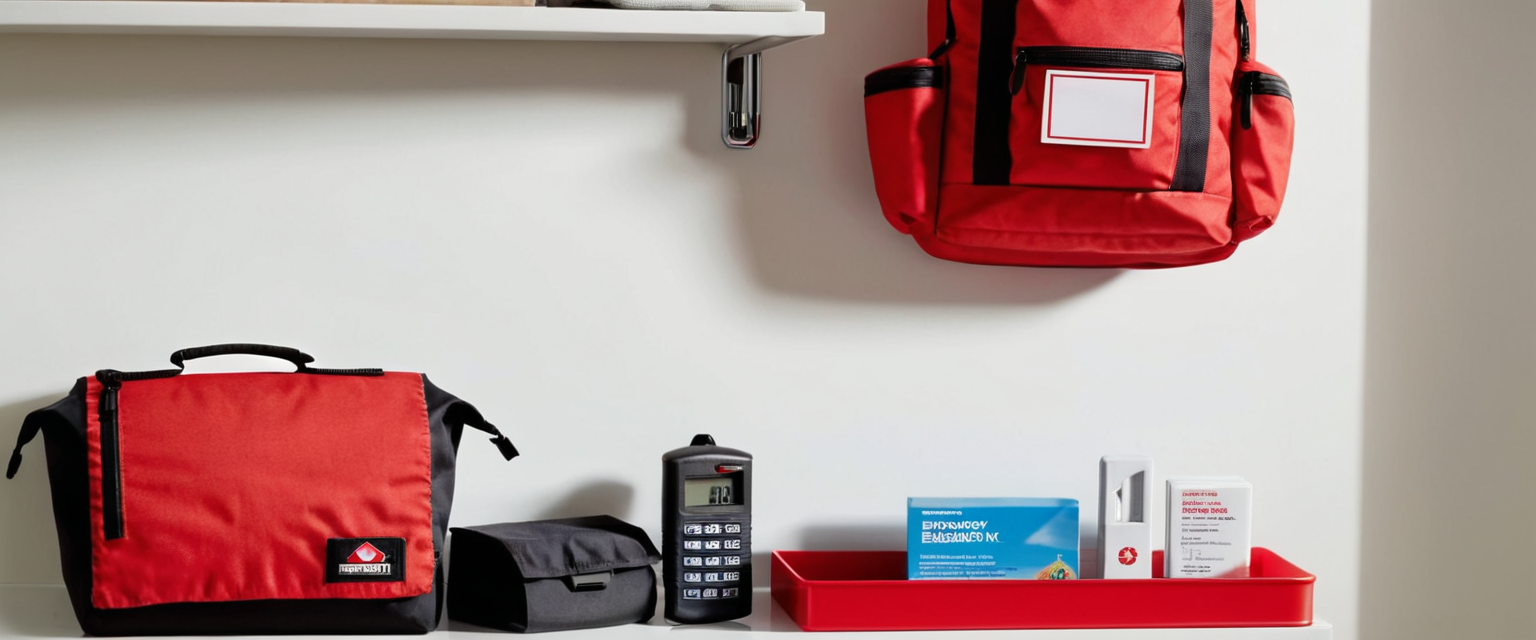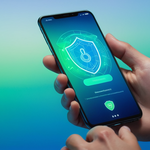
As we increasingly conduct our lives both online and offline, the challenge of protecting sensitive financial and medical documents while ensuring loved ones can access them during emergencies has become a critical concern for families and individuals. Emergency kits that combine encrypted digital storage with secure access mechanisms represent a modern solution to a timeless problem—how to safeguard critical information while maintaining accessibility when it matters most. This comprehensive report examines the multifaceted approaches to creating secure emergency kits that balance protection, accessibility, and ease of use for trusted contacts who may need to manage your affairs during medical crises, natural disasters, or unfortunate circumstances.
Understanding Emergency Kits and Their Purpose in Modern Life
Emergency kits serve as centralized repositories for critical documents and information that individuals and families may need during crisis situations. Traditional notions of emergency preparedness focused primarily on physical supplies like water, food, and first aid materials, but the expansion of digital life has necessitated a broader approach to emergency planning. Today’s emergency kits must encompass not only physical documents but also secure access to digital assets, financial accounts, medical records, and passwords that represent an increasingly substantial portion of personal and family wealth and well-being.
The significance of emergency kits extends beyond mere convenience. Consider the practical implications: when a family member suffers a medical emergency, loved ones may need immediate access to health insurance information, medication lists, and medical history to facilitate appropriate care. In the aftermath of natural disasters that have caused over $600 billion in property damage in the past decade, families require rapid access to insurance policies, property deeds, and proof of ownership for damage claims. During legal proceedings or estate settlement, authorized representatives must retrieve wills, powers of attorney, and financial records. Without proper preparation, these critical situations become exponentially more complicated and stressful precisely when clarity and efficiency are most needed.
The concept of emergency kits has evolved dramatically from simple paper files stored in fireproof safes to sophisticated hybrid systems combining physical documentation with encrypted digital vaults, biometric security, and controlled access mechanisms. This evolution reflects both the increasing digitalization of personal financial and medical information and growing awareness that one-size-fits-all solutions inadequately address the complex security requirements of modern households. An average family wastes over four hours monthly searching for lost documents, and nearly one in three Americans has experienced difficulty accessing a loved one’s important documents during a crisis, statistics that underscore the widespread nature of this organizational and access challenge.
Types of Critical Documents for Emergency Kits
Creating an effective emergency kit requires understanding which documents are essential to include and why. Financial documents form the foundation of emergency preparedness, as they enable family members to understand and manage the financial aspects of an individual’s life during absence or incapacity. These documents include bank account information with account numbers and contact details for financial institutions, investment account statements and access credentials, mortgage and loan documentation with payment information, insurance policy numbers covering health, life, home, auto, and other valuables, tax returns from the previous year or two to establish income history, and a comprehensive list of all debts and obligations including credit card accounts, personal loans, and other financial commitments.
Medical documents represent another critical category, particularly given HIPAA regulations that govern access to protected health information. Essential medical documents include a current list of all prescribed medications for each family member with dosages and prescribing physicians, insurance cards and policy numbers from health providers, comprehensive medical history identifying pre-existing conditions and previous diagnoses, allergy information and adverse medication reactions, immunization records and vaccination status, contact information for all treating physicians and specialists, and emergency medical contacts such as preferred hospitals or emergency care facilities. The inclusion of medical records in encrypted emergency kits proves particularly valuable during medical emergencies when healthcare providers need rapid access to accurate patient histories without delay.
Legal documents establish rights, clarify wishes, and facilitate proper management of affairs. These include the original will or a certified copy directing distribution of assets and guardianship arrangements, power of attorney documents granting authority to manage financial or healthcare decisions, advance healthcare directives or living wills expressing medical preferences, guardianship designations for minor children or dependent adults, property deeds and titles for real estate holdings, business ownership documents and partnership agreements, military discharge papers or service records, and adoption or birth certificates establishing legal identity and family relationships.
Identification documents enable family members to verify identity and access various services. These comprise driver’s licenses, passports, military identification, Social Security cards, birth certificates, marriage or divorce decrees, and immigration or naturalization documentation. Creating copies rather than storing originals in some cases protects the original documents from damage or loss while ensuring accessibility during emergencies.
Additional documents strengthen emergency preparedness by providing contextual information and facilitating communication. These include recent family photographs of all household members to aid in identification if family becomes separated, employment records and benefits documentation detailing retirement plans and employee benefits, contact information for important service providers including utility companies, attorneys, accountants, and financial advisors, information regarding pet ownership including medical records, vaccination status, microchip numbers, and photographs, household inventory and photographs for insurance claim purposes, safe combination information or passwords to physical safes where original documents are stored, and emergency response plans including evacuation routes and family meeting locations.
Physical Storage Methods: Fireproof Safes, Safe Deposit Boxes, and Organizational Systems
Despite the growing importance of digital storage, physical documents and their secure storage remain critical components of emergency preparedness. Physical storage methods offer specific advantages and disadvantages that make them suitable for certain categories of documents and circumstances.
Fireproof and waterproof safes represent the most accessible physical storage option for many households, as they provide immediate access during emergencies without requiring visits to external facilities or internet connectivity. A quality fireproof safe protects documents from fire, flood, and water damage while remaining accessible within the home for grab-and-go situations. When selecting a lockable fireproof file box or safe, consumers should prioritize products meeting fire safety standards and constructed with materials like metal reinforcement to resist tampering. These safes should be stored in secure, convenient locations within homes where family members can quickly locate them during emergencies, and they should be positioned away from obvious places where thieves might immediately look, such as under beds or in bedroom nightstands. Fireproof safes should include not only documents but also emergency cash, duplicate keys to homes and vehicles, and the key to safe deposit boxes if families maintain offsite storage.
Safety deposit boxes offered by banks and financial institutions provide secure, climate-controlled storage for original documents that require protection from physical damage and loss. These boxes offer advantages including professional security measures, environmental controls preventing document degradation, and independence from home security systems that might fail during disasters. Safety deposit boxes prove particularly valuable for storing original wills, property deeds, titles to vehicles and real estate, stock certificates and investment documents, jewelry or valuable items of sentimental importance, and rare or irreplaceable documents. However, safety deposit boxes present significant disadvantages during emergencies: access requires either traveling to the bank during business hours or having authorized signatories available, and if the bank sustains damage during disasters, access becomes temporarily or permanently impossible.
Many families employ specialized emergency document binders or accordion files designed specifically for organizing and protecting multiple documents while maintaining portability. These organizational systems typically feature color-coded sections, clear labeling, and weatherproof construction that enables families to grab the entire binder and evacuate quickly. Professional emergency document kits available online provide pre-designed organizational systems with labeled folders and sections tailored to different categories of information, though families can also create custom binders using standard office supplies. The key advantage of organized binders is their portability—families can quickly locate and carry essential documents during evacuations—and the visibility of what information is included, making it less likely that critical documents are forgotten or misplaced. The disadvantage is that physical binders can be damaged by fire, flood, or theft, and they remain accessible only to those present in the home.
According to the Federal Trade Commission, best practices for physical document storage include using lockable, fireproof file boxes kept in secure, handy locations within homes for rapid access, maintaining original records in safe deposit boxes for documents difficult to replace such as deeds and birth certificates (with the exception of wills, which attorneys typically store), keeping documents organized and labeled for easy identification during stressful emergencies, and including emergency cash and backup keys alongside documents for comprehensive preparedness.
Digital Storage Solutions: Cloud-Based Vaults and Encrypted File Systems
The emergence of sophisticated digital storage solutions has dramatically transformed how families can protect financial and medical documents while maintaining secure access for trusted contacts. Digital vaults leverage encryption technologies that render documents unreadable to anyone without proper authorization, while providing accessibility from any device with internet connectivity and eliminating vulnerability to physical disasters affecting specific locations.
Leading digital vault platforms employ advanced encryption standards to protect stored information. Keeper, a prominent password manager and digital vault provider, utilizes 256-bit AES encryption with record-level keys, meaning each document is encrypted individually with its own unique encryption key rather than using a single master key for all files. This layered encryption approach means that even if Keeper’s servers were breached, attackers could not decrypt stored documents without individual record keys that users possess. Similarly, Proton services implement zero-knowledge architecture combining AES-256 encryption, xChaCha20-Poly1305, and Ed25519 algorithms to ensure that Proton itself cannot access users’ encrypted data even if forced by legal processes to disclose stored information. LastPass employs PBKDF2-SHA256 with 600,000 iterations to derive encryption keys from master passwords, then applies additional AES-256 encryption to vault contents, ensuring that only users who know their master passwords can decrypt stored documents.
The technical implementation of zero-knowledge encryption represents a critical distinction between consumer-grade storage services and enterprise solutions specifically designed for sensitive information. In zero-knowledge architecture, encryption and decryption happen exclusively on user devices before data is transmitted to servers, meaning service providers never see unencrypted information and cannot be compelled to provide access even under legal authority. This architectural approach fundamentally differs from many cloud storage services where providers retain decryption capabilities and could theoretically access stored information.
Digital vaults designed specifically for emergency access and family document management include services like GoodTrust, IronClad Family, and Your Digital Vault, platforms that combine encrypted storage with specialized features for emergency situations and estate planning. These services provide not only document storage but also organizational tools for creating wills, healthcare directives, funeral plans, and designating trusted contacts who can access documents under specified circumstances. IronClad Family, for example, uses zero-knowledge encryption with AES-256 standards to protect all stored information, implements two-factor authentication for additional security, offers unlimited file uploads and document types, and provides automated delivery mechanisms to send documents to designated recipients automatically when specified conditions occur.
Medical document storage presents particular considerations given Health Insurance Portability and Accountability Act (HIPAA) requirements and the sensitive nature of healthcare information. Cloud storage providers that serve healthcare organizations must comply with HIPAA regulations requiring specific security measures including risk assessments, audit logging, access controls limiting information to authorized personnel, and encryption standards protecting protected health information both in transit and at rest. Providers like Box, Carbonite, Dropbox Business, Google Cloud, and Microsoft Azure offer HIPAA-compliant cloud storage options featuring end-to-end encryption, granular access controls, audit trails recording all access attempts and file modifications, and disaster recovery capabilities ensuring data restoration after service disruptions.
For individuals (rather than healthcare providers) storing personal medical records in digital vaults, HIPAA protections do not apply to personal use, though many personal document storage services voluntarily implement HIPAA-level security. The significance lies in using encryption standards and providers that meet healthcare security standards even when HIPAA compliance is not legally required, ensuring sensitive medical information receives appropriate protection against unauthorized access.

Emergency Access Features: Password Managers and Digital Vault Mechanisms
Modern password managers and digital vaults have evolved beyond simple password storage to include sophisticated emergency access features enabling trusted contacts to gain vault access under specified circumstances without compromising normal security protections. These features address the central challenge of digital emergency kits: how to make sensitive information inaccessible during normal times while ensuring authorized individuals can access it when needed during emergencies or after death.
Keeper Emergency Access allows account holders to designate up to five trusted contacts who can request access to the entire vault after specified wait periods ranging from immediate access to three months. When a grantor (the person controlling the vault) adds emergency contacts, they specify which contacts receive view-only access (allowing contacts to see passwords and documents but not modify vault contents) or takeover access (allowing contacts to reset the master password and gain full vault control). During normal circumstances, grantors can deny emergency access requests at any time, giving them continued control even after requesting a wait period. If a request goes unanswered during the designated wait period, access is automatically granted to the requesting emergency contact.
LastPass Emergency Access operates similarly, allowing users to designate emergency contacts from among existing LastPass users who can request vault access after specified wait periods. Once designated emergency contacts are invited and accept the invitation, they can request access to the entire vault. The original account holder can deny access requests if able to do so, but if the request remains unanswered beyond the specified wait period, access is automatically granted. This mechanism ensures that emergency contacts gain access during genuine emergencies or after death when the original account holder cannot respond, while preventing unauthorized access if the original account holder can deny obviously inappropriate requests.
Bitwarden Emergency Access similarly enables Premium users to designate trusted emergency contacts with specified wait times and access levels. Unlike some competitors, Bitwarden allows multiple emergency contacts and unlimited numbers of contacts, though each contact must have a Bitwarden account (though they do not require Premium status). Bitwarden’s emergency access provides flexibility through two user access levels: View-only access allows emergency contacts to see all vault contents including passwords and sensitive documents but prevents modifications, while Takeover access enables emergency contacts to change the master password and gain complete vault control including the ability to modify, add, or delete vault contents. This two-level system accommodates different emergency scenarios—family members might only need to view financial or medical information without modifying it, while designated executors might need full control to close accounts and manage digital assets.
Proton Emergency Access, available through Proton’s premium plans, allows users to designate up to five emergency contacts who can gain access to Proton Mail, Proton Drive, Proton Pass, and other Proton services under emergency circumstances. Unlike some competitors that determine emergency access based on account inactivity, Proton’s system explicitly requires the designated emergency contact to request access after a wait period set by the account holder. During the wait period, the original account holder can approve, deny, or let the request automatically proceed. This approach prevents unwanted access if the account holder becomes inactive without explicitly intending for emergency access to be granted. Proton maintains that its emergency access implementation maintains end-to-end encryption even when emergency contacts gain access, meaning account data remains encrypted and inaccessible to Proton itself.
Google’s Trusted Contacts feature provides similar functionality specifically for Google accounts, allowing users to designate up to five trusted contacts who can request access to the account after specified periods of inactivity. When no one with login credentials has accessed the account for the specified period (customizable from three to eighteen months), Google considers the account owner incapacitated or deceased and allows emergency contacts to request access. Once access is granted, emergency contacts can download account data including Gmail, Google Drive files, Google Photos, and other associated services. This inactivity-based approach differs from explicitly requested emergency access but serves similar purposes by ensuring trusted individuals can eventually access critical digital information.
The 1Password service previously offered only password sharing rather than dedicated emergency access features, but provided Emergency Kit functionality enabling users to download PDF documents containing account credentials, secret keys, and recovery codes that can be stored securely by family members or in safe locations. Unlike Emergency Access features in competitors, this approach requires the original account holder to proactively prepare emergency information and share it with trusted contacts, which necessitates conversation and coordination but provides clear control over what emergency information is shared.
Legal and Regulatory Frameworks: HIPAA, Digital Legacy, and Consent
The legal landscape surrounding emergency access to sensitive information, particularly medical records and financial documents, creates important constraints and considerations for emergency kit design. The Health Insurance Portability and Accountability Act establishes specific requirements for how healthcare organizations and covered entities must handle protected health information, though these regulations apply primarily to healthcare providers rather than individuals storing their own medical records.
Under HIPAA, patients possess the legal right to access, request copies of, and obtain their own protected health information, and healthcare providers must respond to such requests within specified timeframes—typically fifteen working days for copies and five working days for inspection. Healthcare providers may deny access only if they believe access could harm the patient or others, and if denial occurs, patients can request that a licensed healthcare provider or psychologist designated by the patient review the records instead. The Privacy Rule further establishes that patients’ personal representatives possess similar access rights, though healthcare providers can require reasonable verification of authorization before granting access to patient information by third parties.
These regulations have important implications for emergency access planning. If a family member becomes incapacitated or passes away, legal representatives may request medical records from healthcare providers, though providers will require documentation demonstrating legal authority such as powers of attorney, guardianship papers, or death certificates. Creating encrypted digital copies of one’s own medical records in accessible emergency kits can bypass this bureaucratic process, enabling immediate access to critical information without waiting for provider responses to formal records requests.
Digital legacy planning has emerged as a distinct legal field addressing the question of what happens to digital assets—passwords, online accounts, social media profiles, cryptocurrency wallets, email accounts—when individuals become incapacitated or pass away. Unlike physical assets clearly transferable through wills and probate processes, digital assets exist in legal gray areas where terms of service for online platforms often prohibit password sharing or account transfer even to family members or executors.
Estate planning documents should explicitly address digital assets and provide access instructions. Many online will-making services including Trust & Will, GoodTrust, LegalZoom, and others now include provisions for digital legacy planning and digital vault storage alongside traditional will and trust documentation. These services recognize that modern estates increasingly consist of significant digital components including financial accounts, cryptocurrency holdings, intellectual property, valuable collections, and irreplaceable digital memories. Designating a digital executor—an individual responsible for managing digital assets and online accounts after death—has become standard estate planning practice, with specific instructions about which accounts should be memorialized, deleted, or transferred.
The practical implementation of digital legacy planning faces challenges because most online platforms prohibit sharing account access even with family members or estate executors. Platforms including Google, Facebook, Apple, and financial institutions increasingly offer legacy contact or memorialization features, but these features operate within each platform independently rather than providing centralized management. Creating encrypted emergency kits with all login credentials, backup authentication codes, and instructions for managing each account provides a workaround to these restrictions while complying with platform terms of service by ensuring credentials are securely stored rather than shared in insecure formats.
Consent and communication represent fundamental legal and ethical considerations in emergency access planning. Emergency access features only function effectively when trusted contacts understand their role, know what information is stored, and have discussed anticipated situations with the account holder. Courts have increasingly required evidence that authorized individuals (such as healthcare decision-makers) understood their designation and accepted the role. Emergency access mechanisms should therefore be accompanied by direct conversations with designated emergency contacts explaining what information is stored, how to access it, what conditions should trigger access requests, and any specific wishes regarding account management after incapacity or death.
Selecting and Managing Trusted Contacts
Designating emergency contacts requires careful consideration beyond simply identifying people one trusts. Effective emergency contacts possess specific characteristics that enable them to fulfill the role during stressful, urgent circumstances. Individuals selecting emergency contacts should evaluate whether potential contacts have demonstrated reliability and judgment, understand relevant aspects of the account holder’s situation such as family structure and medical history, maintain reliable contact information and communication channels, live in locations where they can travel if needed for urgent matters, possess emotional stability to handle receiving potentially devastating information calmly and clearly, and have demonstrated capacity to make sound decisions under pressure.
Geographic proximity to the account holder, while not absolute, significantly influences whether emergency contacts can provide practical assistance during crises. Emergency situations often require rapid decisions, document retrieval, hospital consultations, or property assessment that benefit from local physical presence. However, remote emergency contacts can effectively manage financial decisions, arrange services, and communicate with authorities via phone and email, making geographic proximity less critical for some types of emergencies.
Potential emergency contacts should understand common medical issues affecting the account holder, including conditions that might require specific medications or medical conditions that healthcare providers should know about immediately. Emergency contacts should also possess contact information for family members who should be notified, allowing emergency responders and hospital staff to reach appropriate parties efficiently. Poor choices for emergency contacts include individuals without family relationship to the account holder, people who have never met other family members, and individuals unlikely to be reachable during emergencies due to their own circumstances or locations.
Best practices for emergency contact management include maintaining multiple emergency contacts where possible, ensuring at least one contact lives locally enough to assist with physical needs, establishing clear hierarchy of contact attempts, providing emergency contacts with written instructions about their role, discussing anticipated situations with designated contacts before emergencies arise, and updating emergency contact information annually or whenever significant life changes occur.
Different categories of emergency access may appropriately involve different contacts. Financial emergencies might be managed by accountants, attorneys, or business partners who understand financial complexities, while medical emergencies require contacts with knowledge of healthcare preferences and medical history. Estate management after death might involve formal executors designated in wills, while immediate emergency access during incapacity might involve family members. Creating multiple emergency contact roles with different access levels and wait periods accommodates these different scenarios while maintaining appropriate control.
Managing emergency access permissions should include regular review and updating. Life changes including divorces, family estrangements, changes in employment, or relocations of key contacts necessitate updating emergency access designations. Review cycles should occur at minimum annually, though every six months provides more thorough oversight, particularly for individuals with complex medical or financial situations, significant life changes, or who employ multiple emergency contacts with varying roles.
Physical and Digital Hybrid Approaches: Integrating Storage Methods
The most robust emergency preparedness approaches employ hybrid strategies combining physical and digital storage methods, leveraging the particular advantages of each while mitigating their specific limitations. The 3-2-1 backup strategy, widely recognized as best practice in data management, provides a useful framework: maintain three copies of important information, store those copies on two different types of media or devices, and keep one copy in an offsite location. Applied to emergency document kits, this principle suggests maintaining original physical documents in secure locations, keeping copies in accessible emergency kits, and storing encrypted digital copies in cloud-based vaults.
Many families employ this integrated approach by maintaining original legal and financial documents in safety deposit boxes, storing copies in home-based fireproof safes alongside emergency cash and backup keys, and uploading scanned images of documents to encrypted cloud vaults accessible by designated emergency contacts. This redundancy ensures that document loss from any single location doesn’t eliminate access to critical information. If homes are destroyed by fire or flooding, offsite copies exist. If banks close access during disasters, digital copies remain accessible. If emergency situations occur while away from home, digital copies are accessible from any internet-connected device.
The practical implementation of hybrid approaches should follow established document management principles. Physical originals should be stored in secure locations suitable for each document type—safety deposit boxes for documents that are difficult or expensive to replace such as property deeds and birth certificates, home safes for documents needed more frequently such as insurance policies and medical lists, and with attorneys or trusted professionals for key legal documents such as wills. Copies should be organized and labeled clearly for easy identification during emergencies, whether stored in physical binders or digital folders. Emergency contacts should understand the physical locations where documents are stored and, for physical documents, possess keys or combinations to access stored documents.
For documents containing highly sensitive information such as Social Security numbers, complete medication lists with dosages, or full financial account information, encrypted digital storage often provides superior protection compared to physical copies that could be stolen or found by unauthorized individuals who gain access to home safes. Encrypting these documents means that even if physical devices are stolen or digital backups accessed, the information remains unreadable without encryption keys known only to authorized users. Conversely, documents that contain images or complex formatting such as medical imaging results, certificate documents, or photographs often preserve better when stored physically and need not be encrypted if maintained in secure locations.
The Federal Trade Commission provides comprehensive guidance on integrating storage methods: use lockable fireproof file boxes for documents that need rapid physical access during evacuations, rent safe deposit boxes for documents hard to replace and not accessed frequently, create digital scans of documents for convenient access and backup, utilize personal cloud storage with strong password protection and multifactor authentication, maintain offline copies of particularly critical information such as estate plans, and keep multiple formats and locations up to date through annual review cycles.
This hybrid approach requires accepting some redundancy in exchange for comprehensive protection. Documents are stored in multiple locations in multiple formats, creating organizational complexity. However, this complexity proves worthwhile when emergencies necessitate rapid access to documents and optimal outcomes depend on information accessibility. The investment in properly organizing and maintaining hybrid emergency kits pays dividends during genuine crises when families need documents immediately and lack time to search multiple locations or wait for provider responses to records requests.

Security Considerations: Encryption Standards, Authentication, and Protection
The security effectiveness of emergency kits depends fundamentally on implementing appropriate encryption standards, authentication requirements, and access controls that prevent unauthorized access while preserving access for legitimate emergency contacts. Modern security standards provide technical frameworks ensuring that documents remain protected from theft, accidental disclosure, or unauthorized access even if specific devices or locations are compromised.
Advanced Encryption Standard (AES) with 256-bit key length represents the current cryptographic standard meeting government and financial institution requirements for protecting sensitive information. AES-256 encryption means that unencrypted data is mathematically scrambled using a 256-bit encryption key into an output that cannot feasibly be reversed without that specific key. Specifically, breaking AES-256 encryption through brute force cryptanalysis would require computational power exceeding current technological capabilities by orders of magnitude even with specialized hardware. Reputable digital vault services and password managers uniformly employ AES-256 or stronger encryption standards, providing assurance that encrypted documents remain secure regardless of where servers are physically located or what other security breaches occur.
Multifactor authentication (MFA) provides an additional security layer beyond passwords, requiring multiple forms of verification before granting access to accounts containing sensitive documents. Common MFA methods include SMS text messages sent to registered phone numbers, time-based one-time passwords generated by authenticator applications, biometric verification through fingerprints or facial recognition, and security keys or hardware tokens providing cryptographic verification. Implementing multifactor authentication significantly reduces successful account compromises because attackers would need to compromise multiple authentication methods rather than just stealing passwords. For emergency contact situations specifically, implementing MFA creates a complication: emergency contacts might not possess access to the same phone numbers or authenticator applications as the original account holder during genuine emergencies. Reputable services address this challenge by generating backup codes during account setup that can be stored securely alongside emergency access information, enabling emergency contacts to authenticate even if they lack access to the original MFA devices.
Transport Layer Security (TLS) encryption during data transmission prevents interception of unencrypted documents as they travel between user devices and cloud storage servers. TLS encryption means that even on public or unsecured networks, transmitted data remains unreadable to eavesdroppers without the encryption keys used to protect the connection. HTTPS URLs in web browsers and padlock icons indicate active TLS protection, though users should verify these indicators before entering passwords or uploading sensitive documents to any online services.
Zero-knowledge architecture, increasingly standard in security-focused digital vaults, ensures that service providers cannot access encrypted information even if legally compelled to disclose it or if servers are compromised. In zero-knowledge systems, encryption and decryption occur exclusively on users’ devices before data is transmitted to servers, meaning providers never hold unencrypted information or the decryption keys to access it. This architectural approach fundamentally differs from traditional cloud storage where providers retain decryption capabilities. While providers cannot access documents they don’t hold, users must ensure they never lose their master passwords or encryption keys, as recovery becomes impossible if access credentials are forgotten.
Physical security of devices and documents represents an often-overlooked but important dimension of emergency kit protection. Devices storing encryption keys—computers, smartphones, tablets—should be protected from theft, unauthorized physical access, and environmental damage through password protection, full-disk encryption, secure storage locations, and backup power systems. For physical documents stored in emergency kits, protection requires fireproof and waterproof safes, secure storage locations not immediately visible to casual observation, and access restrictions limiting who can retrieve documents during emergencies. Some families deliberately avoid storing emergency document kits in obvious locations like bedroom nightstands, instead placing them with cookbooks or other household items where thieves less likely to immediately look for valuable documents.
Risk analysis for emergency kits should consider the most likely threats in specific circumstances. Families in areas prone to flooding face different risks than those in earthquake zones or regions vulnerable to wildfires. Families with high-value assets face different security risks than those with modest wealth. Individuals working in professions with specific security requirements face risks that casual users might not encounter. These contextual factors should influence specific security implementations, such as choosing flood-resistant safes for flood-prone areas, earthquake-resistant fastening for safes in seismic zones, or implementing additional authentication layers for individuals with elevated security threats.
Organizing and Implementing Emergency Kits: Practical Steps and Maintenance
Creating functional emergency kits requires systematic organization and ongoing maintenance to ensure documents remain current, accessible, and effective when actually needed during emergencies. The process should begin with comprehensive assessment of all information that might be needed during emergencies, continue through intentional organization and selection of storage methods, and conclude with regular review cycles ensuring updates occur as life circumstances change.
The initial assessment phase involves reviewing all financial and medical information, identifying which documents represent originals that cannot be replaced, and determining access requirements for potential emergency scenarios. This phase should produce a comprehensive list organized by category: financial accounts and institutions, medical providers and insurance, legal documents, identification and personal information, and other important contacts and information. For each category, the assessment should identify which documents are originals that must be carefully preserved, which can exist as copies, and which should be encrypted for sensitive information like complete medication lists or Social Security numbers.
Organization systems should employ clear labeling, logical categorization, and standardized location conventions ensuring that emergency contacts can rapidly locate needed information during stressful circumstances. Physical emergency binders or file boxes benefit from color-coded sections with clearly labeled tab sections corresponding to major categories such as “Financial Information,” “Medical Information,” “Legal Documents,” and “Personal Identification.” Some families create “grab-and-go” kits with the most essential information for evacuation situations, maintaining more comprehensive collections in home safes or safe deposit boxes.
Digital organization in encrypted vaults should mirror physical organization through folder structures, clear file naming conventions, and tagging systems enabling rapid searching. Documents should be named descriptively (for example, “2024 Auto Insurance Policy – State Farm” rather than “Insurance” or with cryptic abbreviations), stored in appropriate folders, and tagged with keywords enabling searching by document type, institution, or purpose. Emergency contacts should receive not only vault access but also written explanations of the folder structure so they can navigate stored information without requiring extensive training.
Creating written instructions explaining emergency kit contents and access procedures proves invaluable when emergency contacts must navigate the kit during stressful circumstances without the original account holder present to provide guidance. Instructions should explain what documents are stored and where, how to access physical safes or safe deposit boxes, which emergency contacts should be notified of various types of emergencies, procedures for accessing digital vaults including any special authentication requirements, and specific wishes regarding how information should be used during different emergency scenarios. These instructions should be stored both in physical emergency kits and digitally, with copies provided to designated emergency contacts.
Maintenance and updating should occur on regular schedules rather than sporadically, ensuring that emergency kits remain current and effective. Recommended update cycles occur at least annually, with additional updates triggered by major life changes including new employment or retirement, changes in insurance policies or coverage, marriage, divorce, births, deaths, or other significant family events, relocation to different states or countries, changes in financial situation or new significant assets, updates to medications or medical conditions, and changes in designated emergency contacts or trusted individuals. Annual review cycles might occur at regular times such as the beginning of each calendar year or on specific dates like birthdays, making reviews habitual rather than neglected.
The review process should involve physically or digitally reviewing all documents to ensure information remains accurate, updating contact information for medical providers, financial institutions, and emergency contacts, adding new documents created during the year, removing documents that have become obsolete, verifying that encryption credentials and passwords for digital vaults remain secure and accessible, and confirming that emergency contacts remain appropriate and willing to serve in that capacity. Review sessions provide opportunities to have conversations with emergency contacts about the updated information and verify they understand their roles.
Creating Digital Wills and Estate Planning Documentation
Estate planning documents represent a specialized category of emergency kit contents requiring particular attention given their legal importance and the frequency with which they must be updated or modified as life circumstances change. A comprehensive estate plan typically includes wills specifying distribution of assets and guardianship of minor children, trusts providing more sophisticated asset management and distribution than simple wills permit, powers of attorney granting authority to manage financial affairs during incapacity, healthcare directives specifying medical treatment preferences and designating healthcare decision-makers, and in some cases guardianship designations for minor children or dependent adults who require ongoing care.
Modern digital vault and estate planning services streamline the creation of these documents through guided interviews and templates that simplify the complex legal language and decision-making traditionally associated with formal estate planning. Services including Trust & Will, GoodTrust, LegalZoom, and Nolo provide affordable online will makers that guide users through the document creation process by asking clear questions about beneficiaries, asset distributions, and guardianship preferences, then generating customized legal documents appropriate to the user’s specific jurisdiction.
Digital wills and estate plans offer specific advantages including automatic dating and timestamping that establish document creation dates for legal purposes, digital signatures meeting legal standards in most jurisdictions, version control enabling users to track document revisions, and secure storage preventing loss of originals in house fires or disasters. Many digital estate planning services provide notarization services either through online notaries meeting legal standards or arrangements with licensed notaries, adding official authentication to digital documents. This represents a significant advancement from traditional paper wills often stored unsecurely in home safes where they might be lost, damaged, or discovered only after lengthy probate processes.
Critical considerations for digital estate documents include ensuring they comply with specific state or country legal requirements, which vary significantly, accessing legal professional guidance when situations involve complex assets, dependent individuals, or blended families requiring sophisticated trust arrangements, maintaining current contact information for designated executors and healthcare representatives, storing documents in secure locations with clear access instructions for executors, and updating documents whenever family situations change or laws affecting estate planning are modified.
The integration of digital wills into comprehensive emergency kits ensures that estate planning documents are accessible to designated executors when needed while remaining secure during normal circumstances. Rather than leaving wills in safe deposit boxes where they might not be discovered for months, digital vaults with encrypted access enable executors to obtain documents immediately through trusted emergency contact features.
Unlocking Peace: Secure Kits for Your Loved Ones
Emergency kits protecting financial and medical documents through integrated physical and digital approaches represent a necessary and achievable aspect of responsible personal financial and health management. The complexity of modern life—characterized by dispersed digital accounts, multiple financial institutions, sophisticated medical systems, and regulatory frameworks governing sensitive information—demands that families move beyond simple emergency supplies to comprehensive systems ensuring critical information remains accessible during precisely those circumstances when access proves most valuable.
Effective emergency kits combine multiple protective layers: secure physical storage through fireproof safes and bank safety deposit boxes for documents requiring maximum protection, encrypted digital vaults using industry-standard AES-256 encryption for information needing frequent access or remote availability, emergency access features enabling trusted contacts to gain vault access under specified circumstances without compromising routine security, clear organization and documentation enabling emergency contacts to rapidly locate needed information, and regular maintenance ensuring documents remain current and systems remain functional.
The selection of trusted emergency contacts requires careful consideration of not just personal relationships but specific qualifications including reliability, knowledge of relevant circumstances, reasonable proximity for urgent situations, emotional stability under stress, and willingness to serve in this important capacity. Multiple emergency contacts with different access levels and roles accommodate the reality that different types of emergencies require different information and different decision-making authorities.
Legal and regulatory frameworks including HIPAA privacy rights, digital legacy considerations, and estate planning requirements create both opportunities and constraints for emergency kit design. Understanding these frameworks enables families to structure emergency kits ensuring legitimate emergency access while respecting legal boundaries around sensitive information.
The significant statistics demonstrating the widespread nature of this challenge—families wasting over four hours monthly searching for lost documents, nearly one in three Americans having experienced difficulty accessing loved ones’ documents during crises, the average family struggling to locate important documents when needed—underscore that this is not a niche concern but a widespread challenge affecting how successfully families navigate emergencies and manage complex affairs during difficult times.
The investment required to establish comprehensive emergency kits—whether financial investment in digital vault subscriptions and secure storage devices or time investment in organizing, documenting, and maintaining systems—represents prudent preparation that pays substantial dividends during genuine emergencies. When medical crises require immediate access to medication lists and allergy information, when natural disasters destroy property requiring rapid insurance claims, or when family members must manage affairs during incapacity or after death, comprehensive emergency kits provide the clarity, accessibility, and security that differentiate chaotic crisis management from efficient, informed decision-making grounded in accurate information.
Families and individuals who have not yet established emergency kits should view this not as an overwhelming undertaking but as a series of manageable steps beginning with comprehensive document inventory, continuing through selection of appropriate storage methods, progressing to designation of trusted emergency contacts, and concluding with systematic maintenance ensuring ongoing effectiveness. The result—peace of mind knowing that loved ones can access critical information when it matters most, combined with security protecting sensitive information during routine times—justifies the organizational effort required to create and maintain these essential systems.
Protect Your Digital Life with Activate Security
Get 14 powerful security tools in one comprehensive suite. VPN, antivirus, password manager, dark web monitoring, and more.
Get Protected Now





